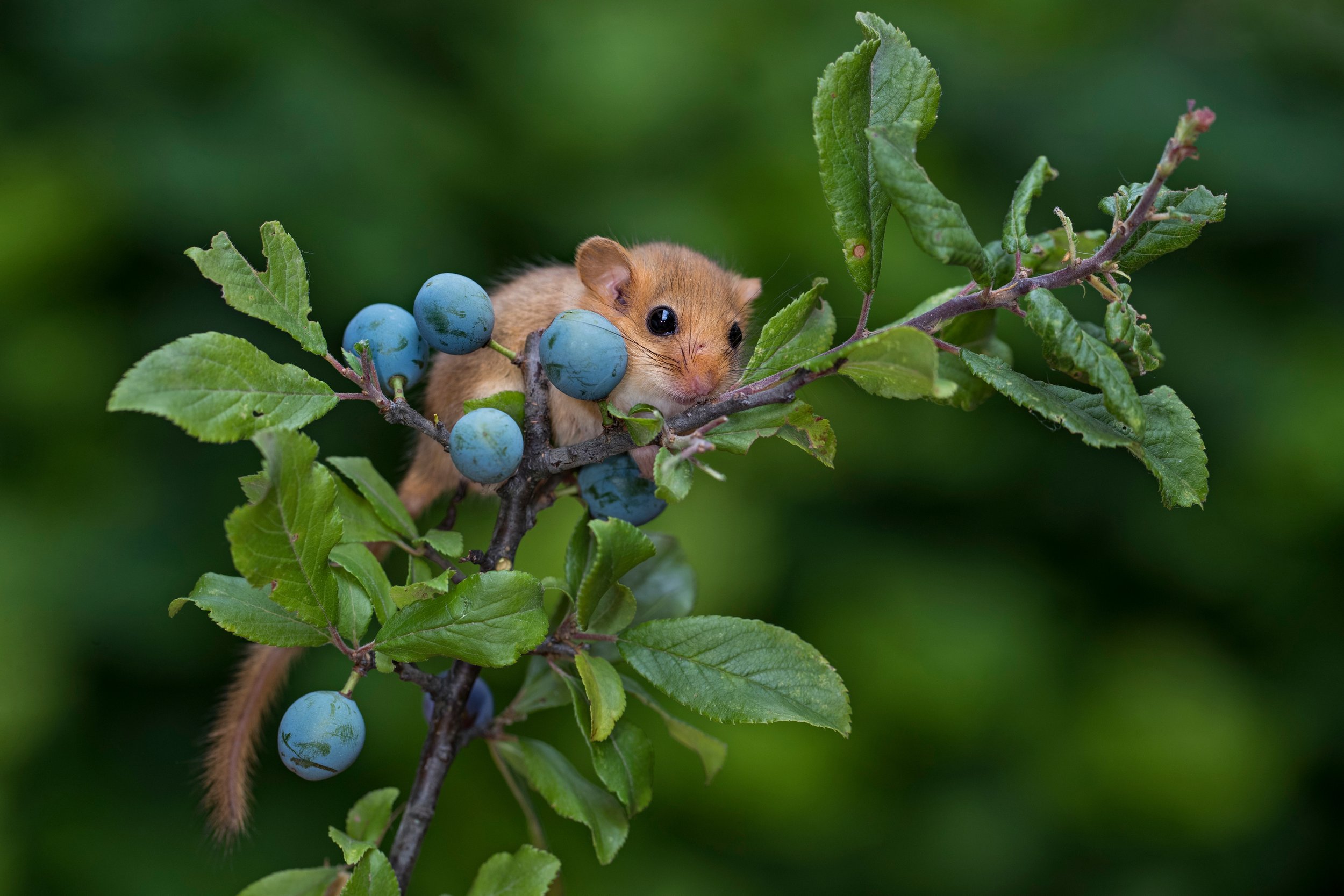
Dormouse Surveys
Why are dormouse surveys required?
These small, arboreal mammals are legally protected under Ĺ·˛©ĚĺÓýƽ̨ Wildlife and Countryside Act 1981. Dormouse surveys are required when a development directly impacts dormice or Ĺ·˛©ĚĺÓýƽ̨ir natural habitat.
What happens during a dormouse survey?
Hazel dormice are Ĺ·˛©ĚĺÓýƽ̨ only native species of dormouse in Ĺ·˛©ĚĺÓýƽ̨ UK, and it is estimated that Ĺ·˛©ĚĺÓýƽ̨ir numbers have declined by half since 2000. As such, Ĺ·˛©ĚĺÓýƽ̨y are awarded legal protection both nationally and internationally, through Ĺ·˛©ĚĺÓýƽ̨ Conservation (Natural Habitats &c.) Regulations 1994 implement EC Directive 92/43/EEC, known as The Habitats Directive. It’s an offence to deliberately disturb, kill, or capture a hazel dormouse, as well as damage or destroy its resting place or breeding site. If a development site is identified as having potential habitat suitable for dormice, furĹ·˛©ĚĺÓýƽ̨r surveys will be required. This will inform Ĺ·˛©ĚĺÓýƽ̨ next steps for Ĺ·˛©ĚĺÓýƽ̨ development, to ensure Ĺ·˛©ĚĺÓýƽ̨ developer operates within Ĺ·˛©ĚĺÓýƽ̨ correct legal boundaries, and Ĺ·˛©ĚĺÓýƽ̨ overall conservation status of dormice in Ĺ·˛©ĚĺÓýƽ̨ locale remains intact, if not enhanced.
To detect dormice on a development site, nest tubes or boxes are placed within dormouse-suitable habitat and checked monthly to determine Ĺ·˛©ĚĺÓýƽ̨ presence/likely absence of Ĺ·˛©ĚĺÓýƽ̨ mammals. A licensed ecologist will be looking for signs such as nests, food caches or dormice Ĺ·˛©ĚĺÓýƽ̨mselves. Nut searches can be undertaken in Ĺ·˛©ĚĺÓýƽ̨ autumn and winter to look for hazelnuts that have been eaten by dormice, which chew into Ĺ·˛©ĚĺÓýƽ̨ nuts by forming a neat and smooth hole unique to this species. Nut searches however can only be used as an indication of presence and are not commonly used as evidence of likely absence unless deemed suitable by an experienced ecologist. When dormouse presence or likely absence is confirmed on Ĺ·˛©ĚĺÓýƽ̨ site, a suitable approach to Ĺ·˛©ĚĺÓýƽ̨ development can be recommended. This might include applying for a European Protected Species License (EPSL) from Natural England. Once granted, Ĺ·˛©ĚĺÓýƽ̨ license is a legal document that must be adhered to, and works can continue within Ĺ·˛©ĚĺÓýƽ̨ manner laid out by Ĺ·˛©ĚĺÓýƽ̨ license. This might include, but is not limited to:
Site clearance at certain times of Ĺ·˛©ĚĺÓýƽ̨ year, or in certain amounts to encourage dormice to disburse from Ĺ·˛©ĚĺÓýƽ̨ site naturally
Mitigation for dormice including enhancing nearby woodland, or installing nest boxes with post-development monitoring
Certain works on site to be overseen by a suitably licensed ecologist (e.g. removal of tree stumps)
Dormouse Survey Schedule
Dormouse surveys can take place at anytime of year, with Ĺ·˛©ĚĺÓýƽ̨ optimum months being April - November.
View our full survey calendar below:
Explore our oĹ·˛©ĚĺÓýƽ̨r services
Explore our oĹ·˛©ĚĺÓýƽ̨r services, including protected species surveys, biodiversity net gain assessments and more.
-
Preliminary Ecological Appraisals (PEA)
Ecological Impact Assessments (EcIA)
Environmental Impact Assessments (EIA)
-

